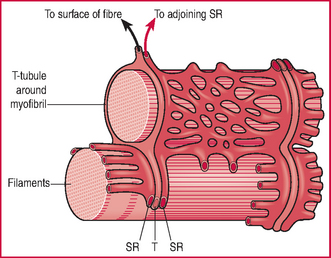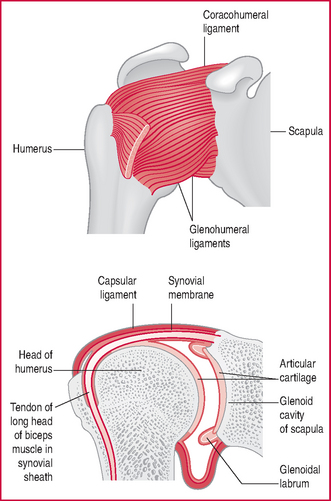S
saccade a rapid movement of the eyes as they move from one fixation point to another or track a moving object.
sacroiliac (SI) joint the joint between the sacrum and the ilium of the pelvis. A synovial plane joint with very limited movement. The SI joint facilitates the torsional or twisting movement of the pelvis as the lower limbs move. Often involved in inflammatory arthritis, seen in sport in athletes with lower limb biomechanical problems. See appendix 1.2 figs 1, 2.
salbutamol short-acting beta-agonist drug, used to relieve the bronchoconstriction of asthma. Use in sport is restricted due to its anabolic (and thus potentially performance-enhancing) effects. New WADA guidelines require the degree of bronchoconstriction to be measured by formal lung function testing, with the use of salbutamol allowed only if specific criteria are reached. Requires a Therapeutic Use Exemption (TUE) form for use in sport.
salt there has been controversy in the past about the potentially harmful effects of excessive salt intake (specifically the sodium component). A statement from the Faculty of Public Health of the Royal College of Physicians UK has endorsed evidence that intake above the recommended maximum of 6 g per day for adults (less for children, proportional to age group) is strongly linked to the development of hypertension, and is therefore in turn a risk factor for coronary artery disease and stroke, whereas the average intake over the population is closer to 9 g per day. More than 6 g per day is, however, likely to be appropriate for athletes whose training or competition involves excessive sweating. Salt in the diet (apart from added table salt and that used in cooking) is derived mostly from processed food and there are also other minor sources of sodium. See also sodium, minerals, water balance; appendix 4.3.
sarcolemma cell membrane of skeletal muscle fibre, plus an extracellular layer of carbohydrate and collagenous macromolecules which imparts some mechanical strength and is contiguous at fibre ends with tendons or aponeuroses of origin and insertion.
sarcomere length-wise repeating unit of striated muscle, from one Z line to the next; length about 2.5 × 10−6 in fully extended muscle, less in shortened. See also myofibrils.
sarcoplasmic reticulum (SR) membrane-bounded system within the cytoplasm of all muscle cells (particularly prominent in large, skeletal fibres), which on excitation releases calcium ions (thereby activating force-generation). In skeletal muscle this occurs when an action potential (AP) invades abutting t-tubes. If the AP, and thus the release process, is not repeated within a few tens of msec, the active reabsorption of Ca2+ into the SR by the calcium (Ca) pump leads to relaxation. See also muscle fibre; appendix 1.2 fig 7.
sarcoplasmic reticulum ATPase see muscle enzymes.
Sargent jump test an elementary test of lower limb impulsive power, consisting of comparison between a subject’s upward reach when standing and the height attained in a standing vertical jump; most simply performed against a blackboard, against which chalk is pressed by the subject’s hand.
satellite cell small cell, a nucleus surrounded by minimal cytoplasm, lying outside but as close as possible to the membrane of a skeletal muscle fibre, and within the sarcolemma. When fibre enlargement (hypertrophy) or repair is required, satellite cells divide, one daughter becoming active in developing new muscle cytoplasm and the other being retained as a further-generation satellite cell.
satiety with reference to food, the converse of hunger – the sensation of satisfaction or fullness. Mediated by the hypothalamus and influenced by many complex factors, including hormone secretions from the gut in response to a full meal, vagal afferent stimulation by stomach distension, insulin/glucagon secretion and blood glucose concentration.
scalar describes a variable, quantity or measurement that has only magnitude (size), i.e. no directional component. Can be added arithmetically. Examples are area, speed, temperature.
scaphoid bone a (tarsal) bone in the foot and a (carpal) bone in the wrist. Latter is commonly damaged by compression, causing scaphoid fracture, when there is a fall onto the outstretched hand in hyperextension. If the fracture involves the proximal third of the scaphoid, there is a high risk of non-union and threat of avascular necrosis, due to the poor blood supply.
schema in psychology, an abstract mental representation or set of rules for organizing one’s experience or an aspect of one’s world that is based on experience and stored in memory. It is accessed either consciously or subconsciously in response to relevant environmental cues and facilitates and guides the person’s perception and interpretation of events. schemata pl. schema theory a theory of motor learning, positing that as individuals practise a motor skill, they acquire a schema for the actions involved, which generalizes and guides the execution of similar actions in the future.
sciatica pain felt from the lower back to the buttock, and down the back of the leg to the outside of the foot, due to compression of the spinal nerve roots that form the sciatic nerve, aggravated by bending forwards – the ‘slump test’. May cause detectable sensory loss and occasionally foot-drop. See also intervertebral disc.
segment angle the angle of a segment of the human body (e.g. limb or trunk) to a fixed reference line (e.g. the horizontal).
selenium functions as an antioxidant by serving as cofactor for the enzyme glutathione peroxidase. A few studies have suggested a benefit of selenium supple mentation in improving antioxidant capacity and dim inishing cancer occurrence. Selenium may possibly be effective in athletes who are ingesting insufficient amounts, but it is not known if marginally insufficient intake compromises efficiency of training. Excessive amounts of selenium could have toxic effects. See also minerals; appendix 4.3.
self-concept the totality of a person’s perceptions or description of their self, typically not involving an evaluative component. See also self-esteem.
self-confidence a generalized tendency to believe that one is capable of being successful within or across behavioural domains. See also self-efficacy.
self-determination theory a theory of human personality and motivation predicated on the assumption that people have an innate tendency toward personal growth and development which is facilitated when their psychological needs to feel competent, autonomous and socially related are supported. Widely employed in the study of motivation in sport and exercise.
self-efficacy in social cognitive theory, a person’s belief in their ability to execute the behaviours necessary to achieve desired outcomes. In contrast to self-confidence, self-efficacy refers to beliefs about specific behaviours in specific situations. self-efficacy level the individual’s beliefs about their expected level of performance attainment, ranging from easy to difficult, such as a tennis player’s beliefs about the percentage of first serves they could successfully make in a match. self-efficacy strength the degree of certainty with which an individual expects to successfully execute a behaviour. See also outcome expectancy.
self-esteem the totality of a person’s evaluation of their worth as an individual. Also known as self-evaluation and self-worth.
self-handicapping the imposition of an impediment to successful performance by a person so that they can subsequently either attribute failure to the impediment rather than to lack of ability or effort, or gain increased credit for success. For example, an athlete might avoid training for a race in order to self-handicap.
self-serving bias the tendency to attribute successes to internal factors such as ability and effort and failures to external factors such as bad luck. See also attributions.
self-talk a person’s internal dialogue, which can be positive and motivational or negative and demotivating.
semantic differential a method for measuring affective responses or attitudes to objects or events by asking people to rate the object or event along a bipolar scale, for example ranging from good to bad.
semilunar cartilage see meniscus.
sensation seeking a personality trait associated with a preference for high levels of sensory stimulation, often achieved by engaging in risk-taking behaviours and adopting non-conventional lifestyles.
sensory strictly, applies only to the reception and processing by the nervous system of information from the outside world such that it reaches consciousness as a subjective experience (sensation); often used loosely in relation to any afferent nerve pathway or process, including those serving only reflex function.
series-fibre muscle skeletal muscle in which fibres do not extend from one end to the other, but are a fraction of muscle length and overlap their lengthwise neighbours only enough to convey force from one to another via molecular linkages between their sarcolemmae. Chief benefit is in co-ordination of contraction: in, say, sartorius, which may be 50 cm long, muscle action potential (AP) conduction over the whole length could not initiate contraction at the ends before relaxation had started under the motor endplate; ‘series’ construction allows motor nerve APs, propagating 10–20 times faster, to trigger contractions almost simultaneously throughout the muscle. aka short-fibre muscle.
serotonin a monoamine (5-hydroxytryptamine, 5-HT) formed from the essential amino acid tryptophan. Its widespread actions include vasoconstriction, inhibition of gastric secretion and stimulation of smooth muscle. It is also an important neurotransmitter in the central nervous system; as such it is involved in pain transmission and perception, and can influence a variety of behaviours, including tiredness, sleep, mood and mental fatigue. It is suggested that an increased level of serotonin makes it mentally harder to maintain a steady pace of exercise, as in running or cycling (‘central fatigue’). Administration of branched-chain amino acids has been claimed to reduce uptake of tryptophan by the brain and therefore to diminish serotonin production. See also ergogenic aids; appendix 4.4.
serum the fluid that separates when a sample of blood coagulates after withdrawal from the body. Has the contents that were present in plasma, except for those that have taken part in the clotting process. Used for many biochemical investigations, and in the preparation of specific immunoglobulins for short-term prevention or urgent treatment of some infections in those who are not themselves immune. See also immunity.
sets groups of ‘reps’, separated by substantial recovery intervals. See also repetitions.
shear force force acting parallel to the surface of a material so as to tend to deform it, usually through a shear angle, the angle between a deformed body and its original position.
shoulder girdle the parts of the musculoskeletal system that link the upper limbs to the sternum in front and to the vertebral column behind, including sternoclavicular joint, clavicle, acromioclavicular joint, scapula and attached muscles.
shoulder joint syn glenohumeral joint synovial ‘ball- and-socket’ joint, the ‘ball’ of the head of the humerus articulating with the ‘socket’ of the shallow glenoid cavity of the scapula, which allows the shoulder to move around multiple axes – the greatest range of movement of any joint in the body, providing flexion, extension, abduction, adduction, circumduction and rotation. This flexibility sacrifices stability, which has to be maintained by the surrounding muscles and ligaments, notably the muscles of the rotator cuff; also the socket of the joint is deepened by the glenoid labrum, a ring of cartilage attached to the rim of the glenoid cavity to which the joint capsule, ligaments and tendons are partly attached. labral tears are not uncommon in throwing athletes, including superior labrum anterior-posterior (SLAP) lesions which can be visualized on MRI scan and require arthroscopic surgical repair. See also Bankart’s lesion, dislocation; appendix 1.2 figs 1-5. See fig overleaf.
shuttle test test of aerobic power requiring minimal apparatus, introduced by Leger and colleagues in 1982 and aka Leger shuttle run, multi-stage fitness test or, informally, bleep test. Starting at 8 km.h−1, subjects run to and fro over 20 m at a pace increased every minute until exhaustion.
sit-up exercise of abdominal muscles, in which the subject lying on the floor raises the upper body towards vertical before lowering again; importantly, for safety, should be performed with knees bent to approximate right angle, when the target becomes touching of elbows to knees. aka trunk curl although this term is sometimes reserved for the particular case where chin is pressed against chest during the upper-body elevation.
< div class='tao-gold-member'>









